How Niki de Saint Phalle Brought Art out of the Museum to Inspire Everyone
With a pair of blockbuster exhibitions at Salon 94 and MoMA PS1, the model-turned-artist is ripe for reevaluation
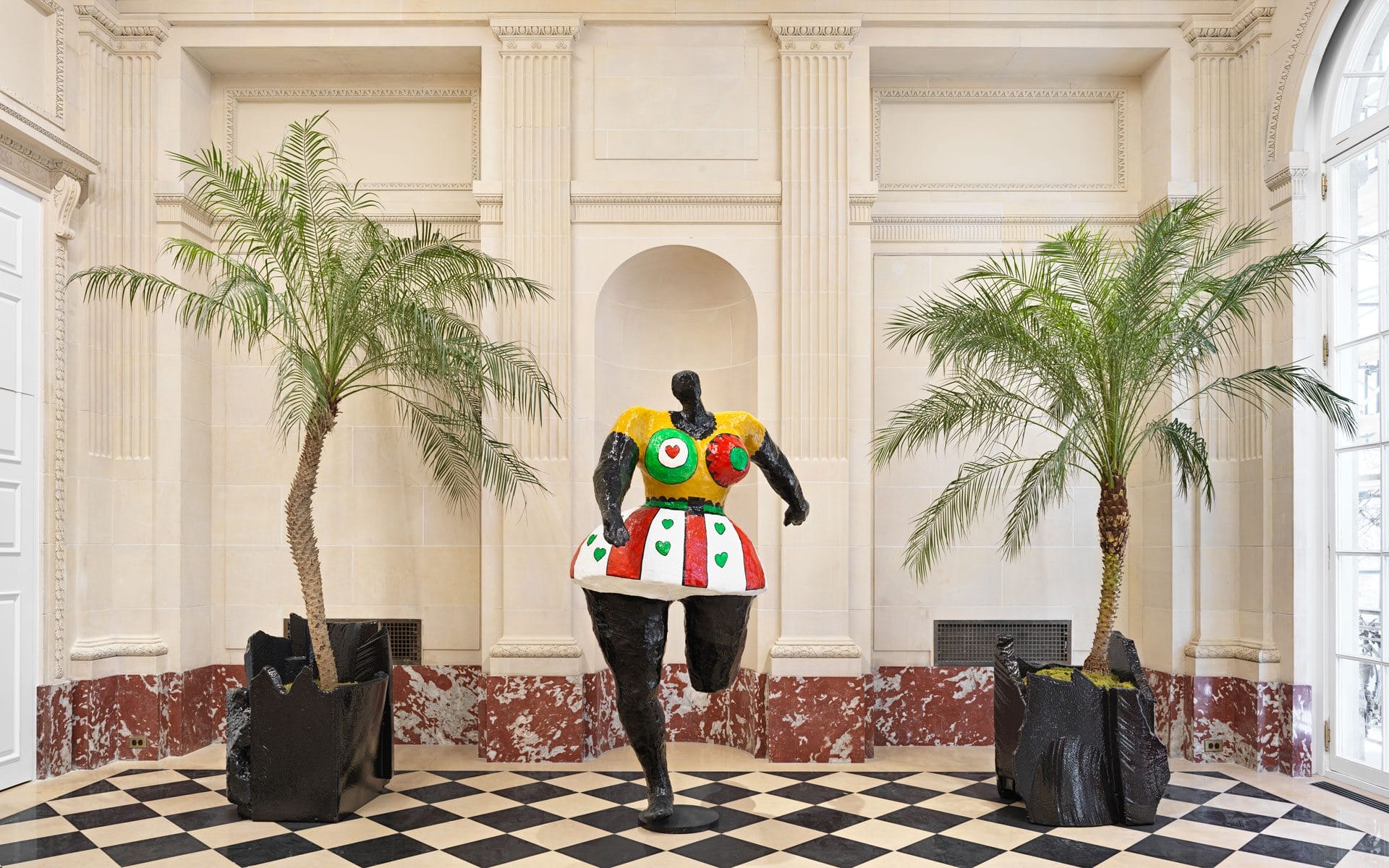
A model-turned-artist, Niki de Saint Phalle became an overnight success in the 1960s with paintings made by shooting a rifle at plaster covered reliefs embedded with containers of paint, which would burst over their white surfaces. A media darling, the French-American charmer parlayed her fame into blockbuster museum shows, public art projects and signature products that she used to wage a feminist battle against the religious, political and cultural patriarchy of her time.
The subject of two must-see surveys that examine her crucial contributions to public art, architecture, and design, Saint Phalle is ripe for reevaluation. At Salon 94, the exhibition “Joy Revolution,” which runs through April 24, features sculptures, editioned furniture and works on paper that celebrate the artist’s philosophy of radical joy—a core concept of her utopic vision of an egalitarian matriarchal society, while a MoMA PS1 show, “Structures for Life,” on view through September 6, focuses on the period following the shooting paintings, when Saint Phalle made her mark as a builder of whimsical structures that could be eccentrically inhabited or joyously played upon.
Born Marie-Agnès de Saint Phalle in France in 1930 to an aristocratic French father and an American mother, the artist spent her early years with her grandparents before joining her parents in the States. Educated on New York’s Upper East Side, she began modeling at 18, and soon graced the covers of Elle, Life, and Vogue. After marrying a writer, she had a daughter and the new family relocated to France, where she suffered a nervous breakdown due to her husband’s infidelities and her own childhood pains. After receiving electroshock treatment at a clinic, she began art therapy and became obsessed with painting and drawing.
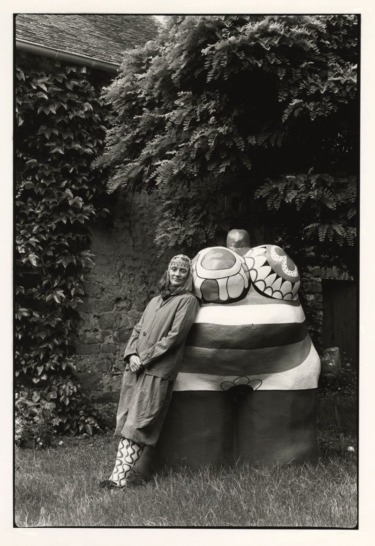
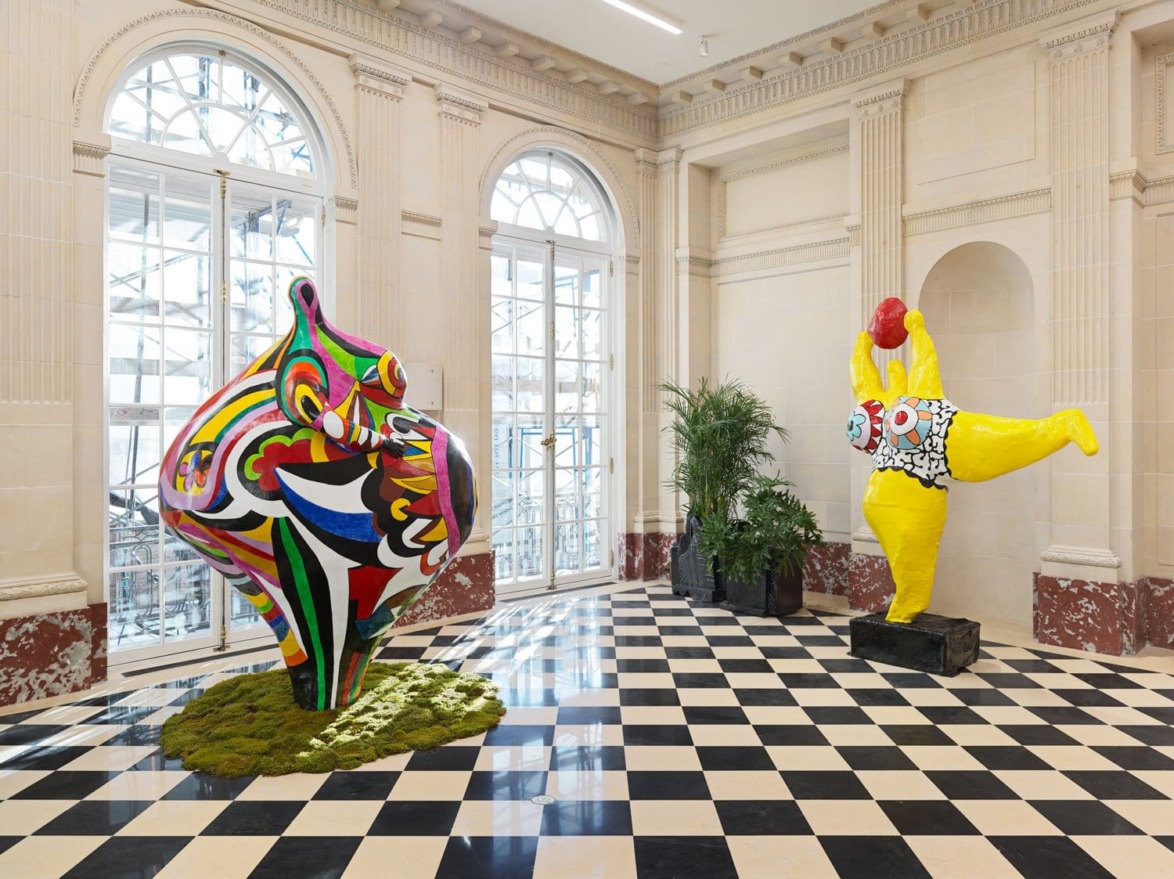
Although she didn’t have any formal training, Saint Phalle displayed a talent at painting naïve portraits before delving into more complex narratives with female figures. Inspired by the organic architecture of Antoni Gaudí, she started adding stones, beads, and broken dishes to her canvases and making assemblages with found objects. Leaving her husband and children to pursue an art career in 1960, she moved in with the Swiss sculptor Jean Tinguely, who had a studio in Paris’ crumbling Impasse Ronsin, where Constantin Brancusi had famously worked.
“If you look at different cultures and ask yourself who are the most skilled artists, most of them are artists who have lived and worked in collaboration with and amongst other artists,” Salon 94 founder Jeanne Rohatyn Greenberg told Galerie. “Niki de Saint Phalle was able to practice her art amongst the greatest artists of her generation. She wasn’t just one of the Nouveau Réaliste artists—she was the only woman in the group, which was significant. She entered the art world on the most sophisticated level, amongst the most avant-garde artists of the time.”

A 1964 collaboration with the American Pop artist Larry Rivers became the inspiration for the artist’s famous Nana figures. Saint Phalle had befriended Rivers and his wife Clarice when they spent a year in a neighboring studio at Impasse Ronsin. Taking River’s pencil drawing of his pregnant wife, Saint Phalle filled the outlines with a collage of colorful characters and designs. Three huge Nana figures from the 1960s—Gwendolyn, Black Dancer, and Le Peril Jaune—are amongst the highlights of the Salon 94 show. The dynamic Gwendolyn is particularly appealing, in that it takes the collaborative collage as its point of departure and is named for the child, which Rivers was carrying.
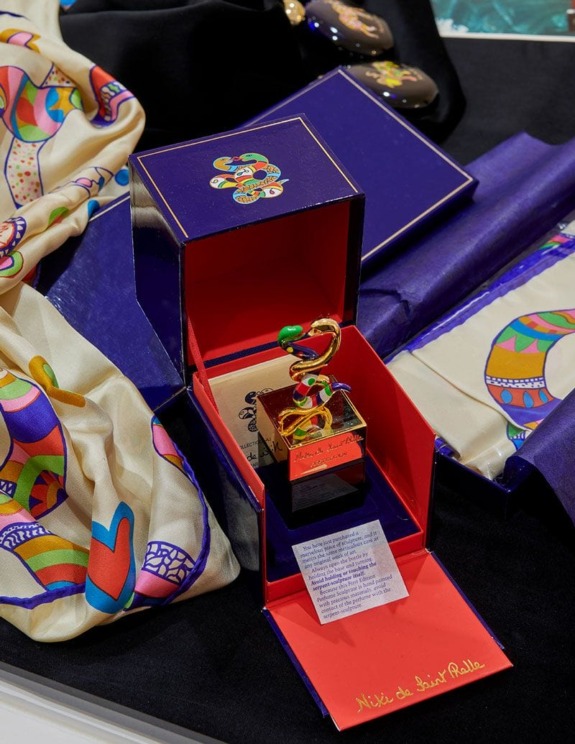
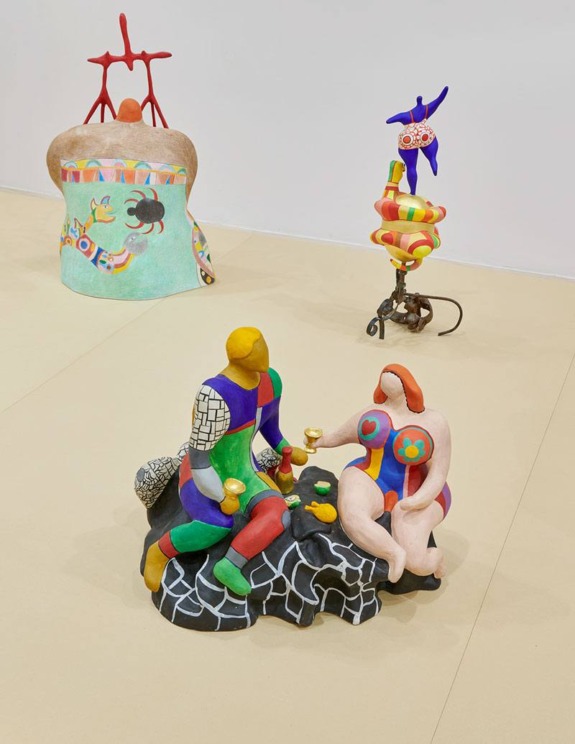
A selection of Saint Phalle’s furniture pieces transform the gallery’s upper level, with a colorfully painted 1981 sculptural lamp from her see-through “Skinnys” series and a 1996 mirrored mosaic table, which was the centerpiece of her legendary Tarot Garden living space, complete with a Tinguely chandelier hanging above it. Still, it’s hard to top the pair of Guardian Lions—from the year 2000, just two years before the artist’s death at age 72—that greet visitors as they enter the ground floor gallery. Jumbo sculptures covered with ceramic tiles, glass and stones, they invite children to crawl all of them, which the gallery happily permits.
The MoMA PS1 exhibition, meanwhile, is chock full of ephemera and maquettes from multiple projects, including photos, collages and films related to her massive Hon-en katedral (She-a Cathedral) structure at the Moderna Museet in Stockholm, which created another media frenzy when it opened in 1966, and models, imagery and videos associated with the Tarot Garden in Italy. Shaped like a reclining pregnant woman, visitors entered the gigantic Hon figure through an opening between her legs to discover an interactive multimedia installation inside. She created a similar structure with The Empress, a house-sized black Nana figure shaped like a sphinx, where she lived for five years while working on the other 21 monumental figures in the Tarot Garden, which opened in 1998.

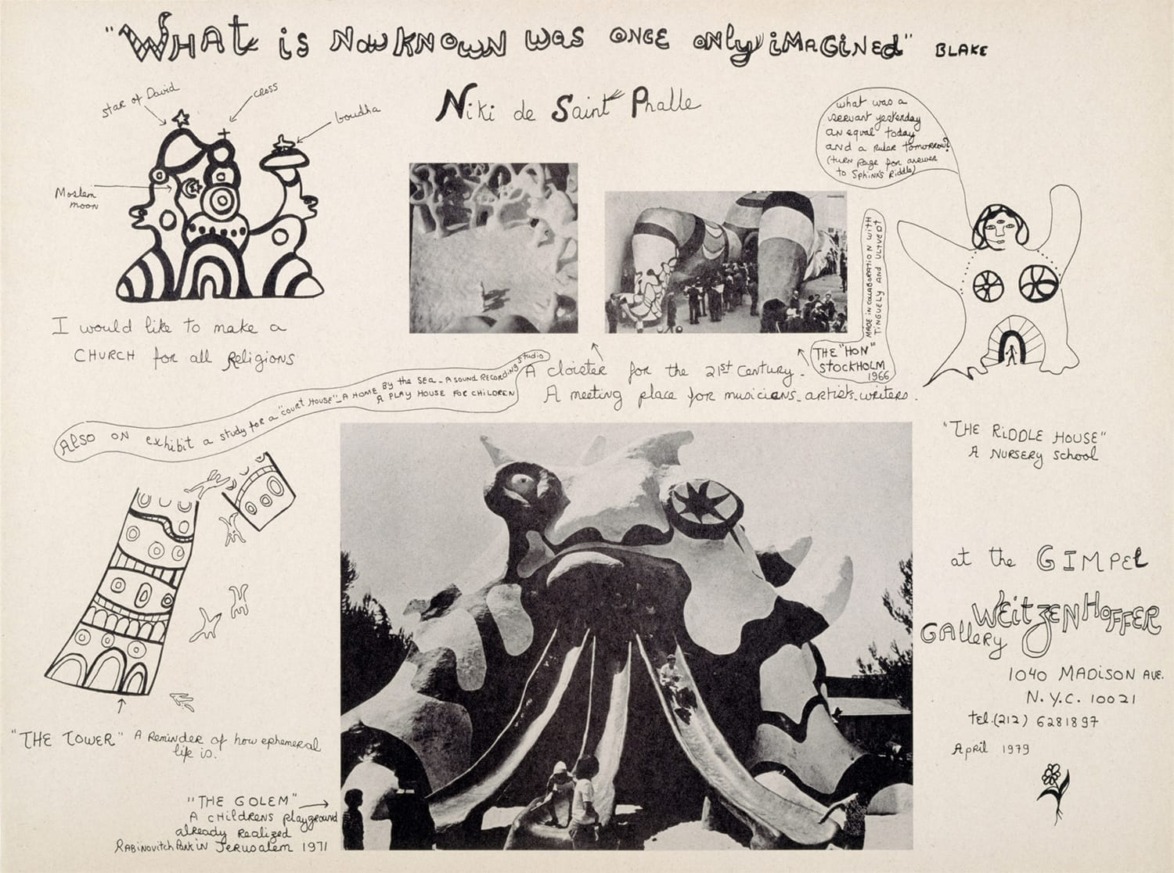
Additionally, the show features several of her other playful projects, drawings for and examples of her illustrated books, packaging and bottles that she designed for her perfumes, and examples of her coveted jewelry, as well as videos of her at work, being interviewed about works and sharing her life story. And there are also more serious subjects, like her video and stills from the 1988 AIDS public service announcement and prints supporting the fight against global warming and the battles for a woman’s right to choose and for gun control.
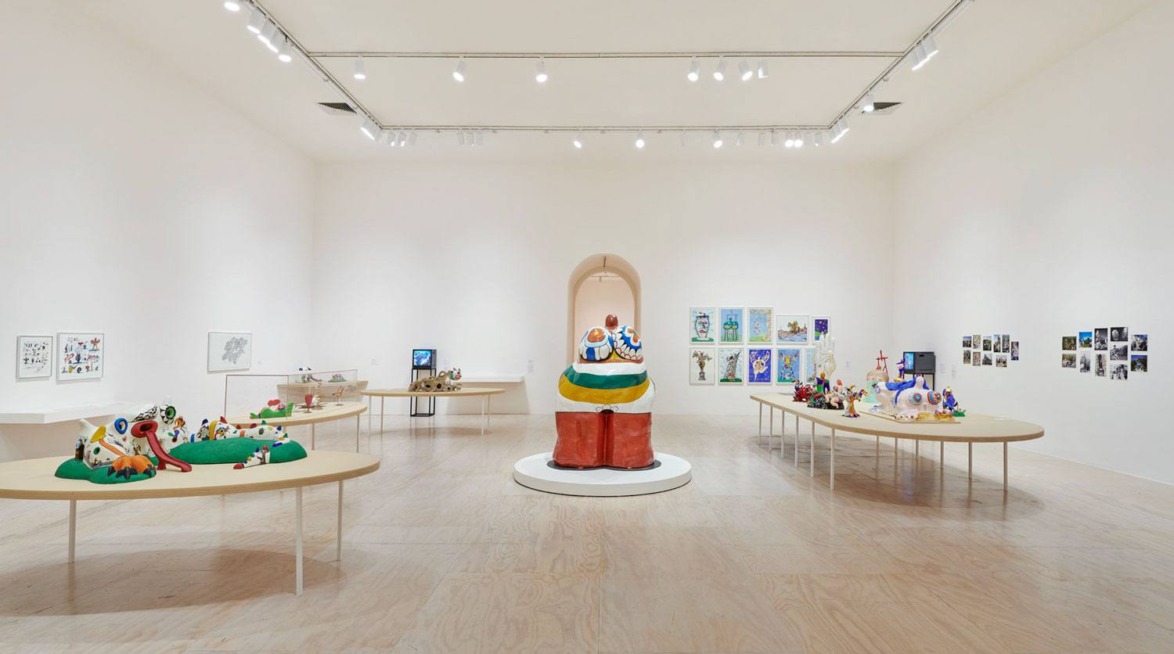
“Niki de Saint Phalle has been grossly misunderstood, and the very things that worked against her while she was alive can perhaps now be seen as her most radical modes of working,” MoMA PS1 curator Ruba Katrib, who co-organized the show, shared with Galerie. “This includes her emphasis on working in and for the public sphere, not only to make her work accessible to a broad range of audiences—particularly demographics that are typically ignored in art like women and children—but to alter the landscape with her monumental site-specific works and her more widely distributed multiples, perfume and jewelry. I think this is very inspiring today for artists who are seeking new ways of working, but also in how she was able to make an impact.”
